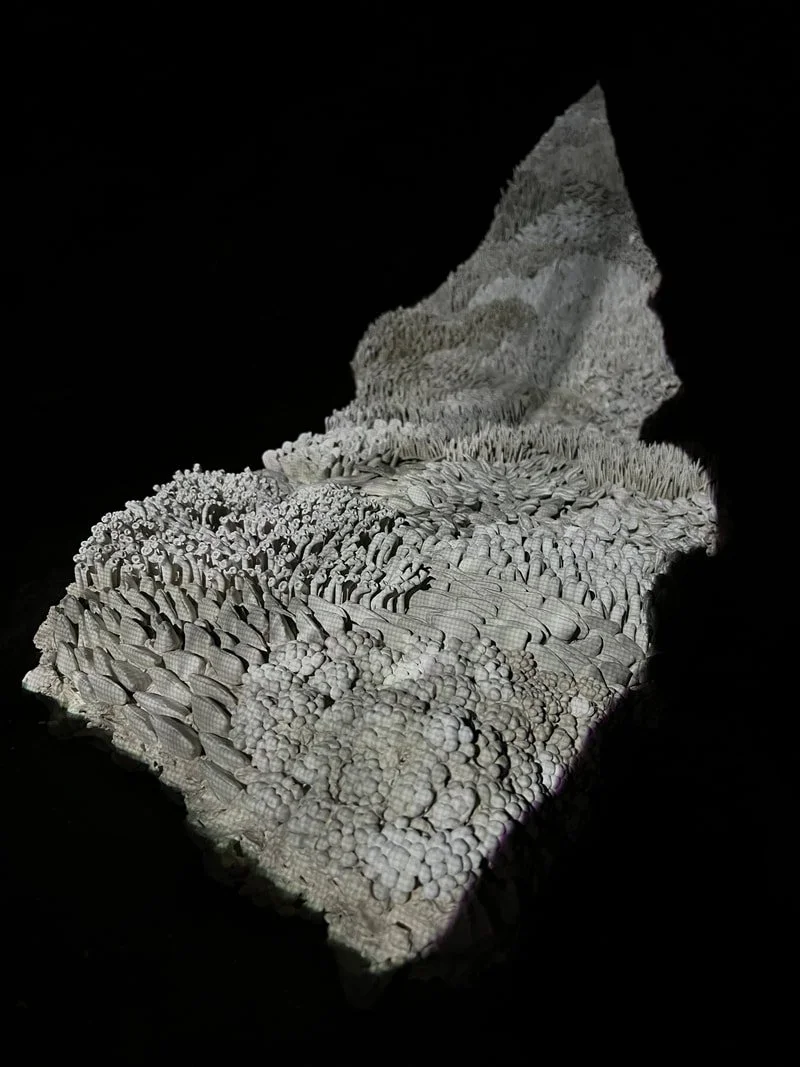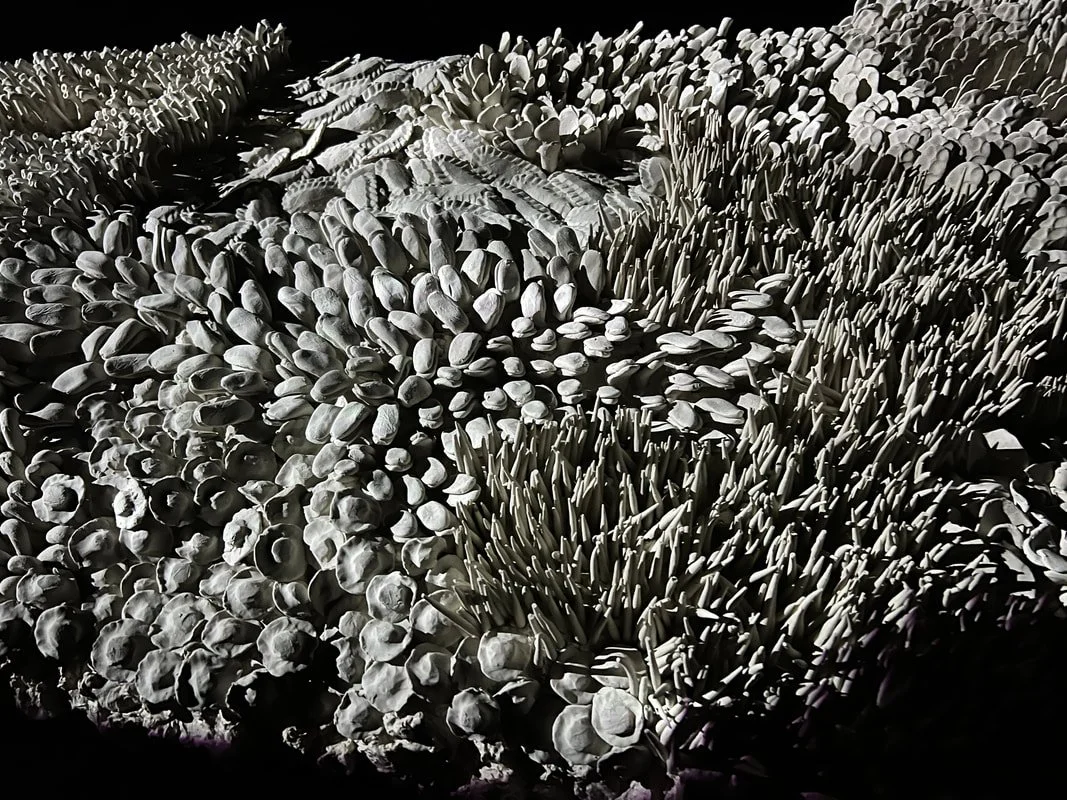Frankie Toan, Queer Gradens: Unruly
Project Spaces, Session 2
Atlanta Contemporary
October 26 - December 23, 2023
To coincide with the exhibitions in their Main Gallery, I was invited by Atlanta Contemporary to curate their Project Spaces for two Sessions. Connected by threads of Care and Stewardship, I invited Rachel Eng, Valaria Tatera, and Greg Climer to install work in Chute Space (a former coal chute), Sliver Space (a sliver of splace between two walls), and Gallery 4 (a dedicated projection space.)
Each work involves an accumulation of components that blossom into deeply meaningful and at times heartbreaking considerations of our relationship to the environment (Eng), our responsibility toward Missing and Murdered Indigenous Women, Girls, and Two-Spirit (Tatera), and our support of love and queer community (Climer).
Rachel Eng Statement:
Unearth is an installation built on site in the former coal chute for the building and considers land use, climate change, and their connection memory. Coal formed over millions of years through a complex geological process. It originated from plant material that accumulated in swampy environments during the Carboniferous period, around 360 to 300 million years ago. As plants in these wetlands died, their remains fell into the stagnant water, where they couldn’t fully decompose due to the lack of oxygen. Over time, layers of sediment covered the decaying plant matter, creating pressure and preventing complete decomposition. White rot fungi, despite their remarkable ability to decompose a wide range of organic materials due to their unique enzymatic systems, are generally unable to break down coal effectively. White rot fungi, are one of the only microorganisms that can break down lignin (a compound found in woody plants), which evolved at the end of the Carboniferous period (1). The forms in this exhibition will reference this synchronicity in being inspired by both fungi and plant organisms that existed millions of years ago. What can we learn from the tremendous age of this planet and the previous rhythms and cycles that it has gone through before humans?
The shape of this piece was inspired by the Weelaunee Forest (ancestral lands to the Muscogee Peoples) which is one of Atlanta’s largest green spaces and is an important piece of climate infrastructure that cools surface temperatures, cleans the air, and prevents flooding. For the past two years the South River Forest has been in jeopardy from a proposed “Cop City” ($90 million, 85 acre, police training facility). This project would destroy parts of the forest and disproportionately impact a majority black neighborhood, furthering the impacts of environmental racism and militarized police force.
Valaria Tatera Statement:
Missing and Murdered Indigenous Women, Girls and Two Spirits is both an epidemic and a movement. It is essential that we understand there is a connection between Missing and Murdered Indigenous Women, Girls and 2 Spirits and the extractive industries. Justice addresses the crisis of Missing and Murdered Indigenous Women, Girls and 2 Spirits. It goes hand in hand with the commodification and exploitation of Indigenous lands and resources. When that happens it makes it easier to objectify, fetishize and exploit Indigenous people. These women, girls and two spirits held important roles in their communities. They made decisions, they held spots on tribal council, they worked to revitalize languages, they carried cultural knowledge and memory. The MMIWG2S were grandmothers, mothers, aunts, sisters and cousins.
Can you feel the breath of their whispers calling?
Gregory Climer Statement:
This piece captures a brief moment of affection between two of my friends, Nathan and Bryan. Over the course of five years, this brief moment was translated into 36 quilts which then became the frames for an animated loop. With this piece, I was exploring how time could impact the legibility of the images on the quilt. Individually, the quilts are not clear representations. Through persistence of vision (the phenomenon which allows flickering images of animations and film to appear seamless in our mind), the images become clearer. Because this work was an exploration of time through craft, I wanted to explore time in relationships. Capturing a single moment of affection, a fleeting moment which might have been forgotten, has elevated that moment. These tender moments are sometimes the most important moments in relationships.
Immortalizing this moment is important to me because queer relationships so often take on political and cultural meaning beyond those of their straight counterparts. Yet, at its core, a relationship is love. Quilts are so often used as metaphors for relationships, family, and love. A patchwork of memories, moments, and emotions that come together to create something greater than their parts. Quilts are heirlooms, a powerful talisman which implies the existence of heirs. By quilting portraits of queer men, I am manifesting a future which did not exist when I was a young man. A future in which queer men do have heirs.









